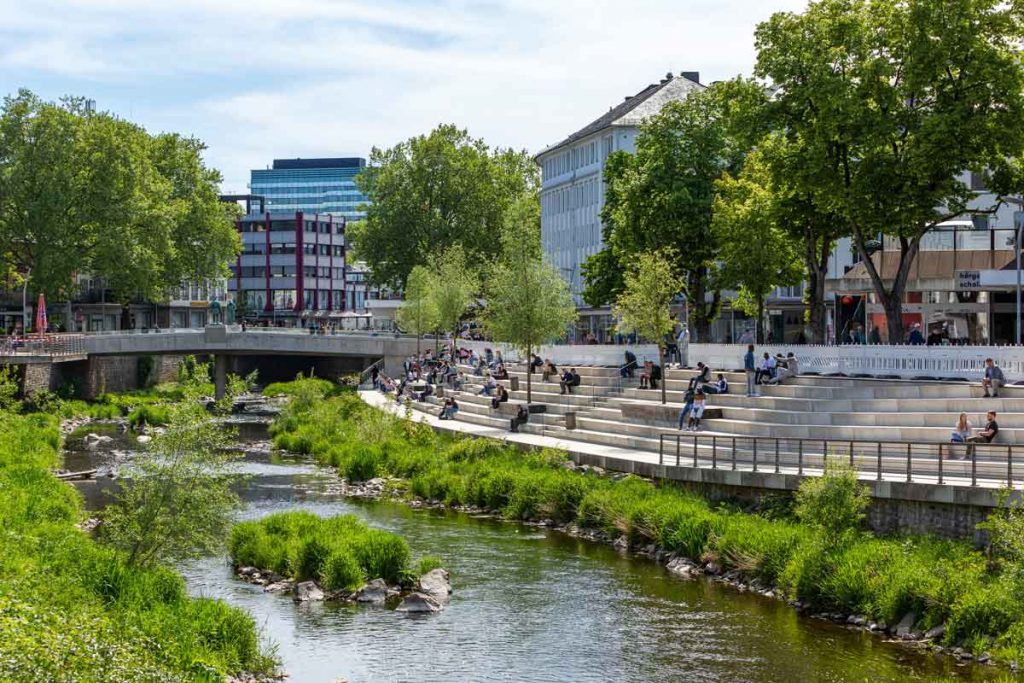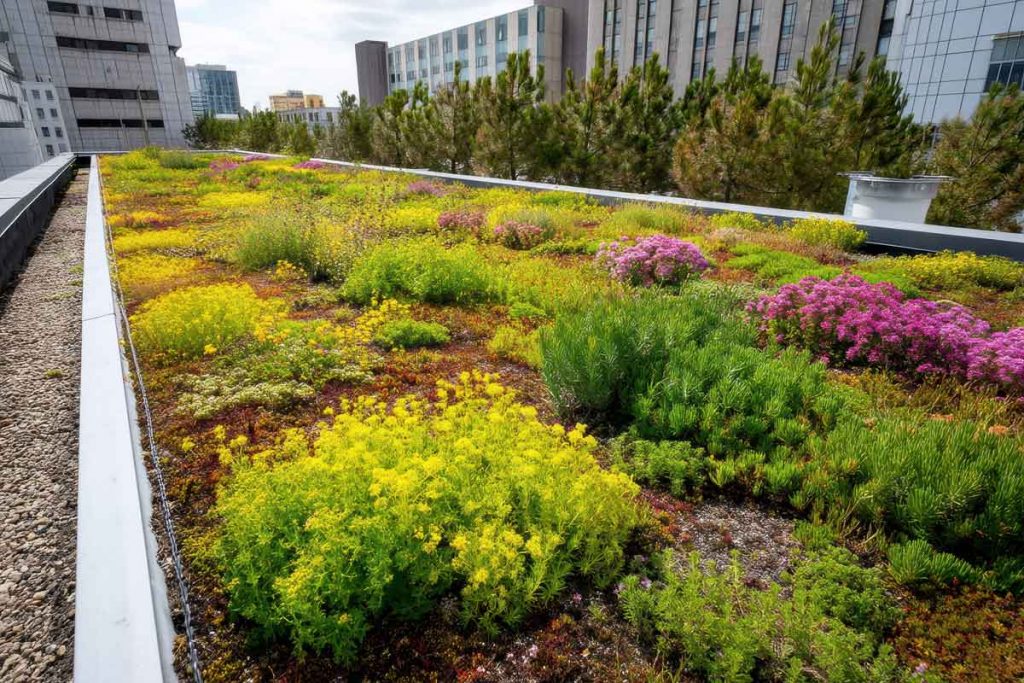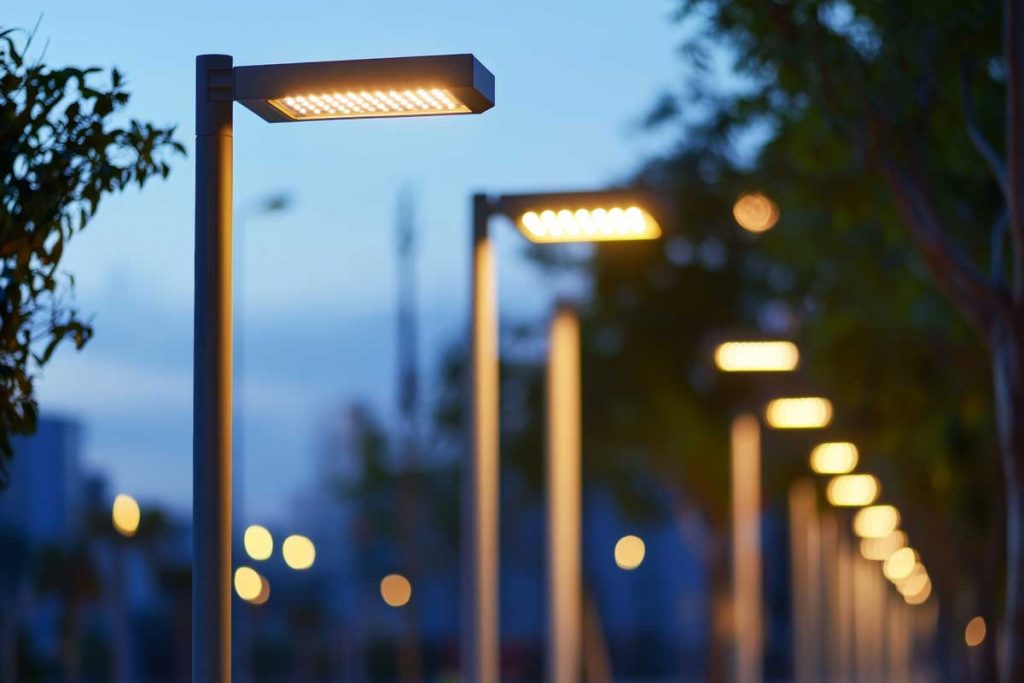Successful climate protection measures need active citizens

Climate protection in municipalities is about more than just cutting CO₂. Success depends on how well measures are put into practice — and that requires engaged citizens. Experience shows that gamification works better than appeals to reason alone. When something is fun, people do it more often and more consistently. That’s why the following ideas focus on tools, activities, and approaches that motivate and communicate effectively.
1. Host a climate action day or climate action week
A climate action day — or even a full week — is an excellent opportunity to put sustainability at the center of community life. These events bring climate protection out into the open with hands-on experiences: information stands, workshops, guided cycling tours, and inspiring talks make the topic tangible and accessible. Involving schools, local clubs, and businesses turns the program into a community-wide effort, showing that everyone can play a part. Such events not only showcase the municipality’s own climate measures but also create excitement, visibility, and motivation for citizens to take action themselves.
2. Join the Klima-Taler network
The Klima-Taler app is a climate protection measure that easily and sustainably anchors CO₂ savings in the municipality. It uses gamification to create incentives for citizens to make everyday life more climate-friendly. At the same time, the app provides ways to measure success and communicate it transparently — another strong motivating factor.
3. Introduce tree and shrub sponsorships
Few measures are as simple yet as impactful as inviting citizens to become “sponsors” for urban greenery. Municipalities can make it easy: residents might adopt the tree pit in front of their home, take responsibility for watering a street tree, or even help plant and care for shrubs in public spaces. These activities raise awareness of how valuable green areas are for cooling cities, improving air quality, and boosting biodiversity. At the same time, they give citizens a sense of ownership and pride in contributing to a greener neighborhood. Recognition through signs, community events, or online mentions adds extra motivation. Tree and shrub sponsorships are a cost-effective way to build identification, increase civic engagement, and visibly green the city together with its residents.
4. Turn public green areas into wildflower meadows

Lawns may look neat, but wildflower meadows bring real climate and biodiversity benefits. With reduced mowing and native seed mixes, municipalities can transform ordinary grass into colorful habitats for bees, butterflies, and birds. Wildflower meadows cost less to maintain, capture more CO₂, and delight residents with vibrant colors. By communicating their ecological value, cities also raise awareness that climate-friendly design may look different — but it’s far more valuable. A beautiful, low-cost way to green the city and win citizen support.
5. Promote local and seasonal food in canteens and childcare
ood is a powerful lever for climate protection. By partnering with local farms, municipal canteens, schools, and childcare centers can shorten delivery routes, cut emissions, and support regional agriculture. Seasonal menus are fresher, healthier, and tastier — something staff and children notice right away. Clear labeling, tastings, or farm visits build awareness of sustainable nutrition. It’s a measure that protects the climate, strengthens the local economy, and improves health — a win on every level.
6. Offer service bicycles and job bikes for employees
Providing bicycles through leasing programs is a highly visible signal that the administration leads by example. Employees enjoy healthier commutes and more affordable mobility, while municipalities save money compared to company cars. Job bikes are not only practical for commuting but also for official trips, reducing congestion and emissions. When citizens see staff using bikes, it inspires imitation and reinforces the city’s role as a climate role model. A popular measure that combines health, savings, and visibility.
7. Switch lighting to LED (e.g., streetlights, schools)

Switching to LED lighting is one of the most straightforward climate protection measures. LEDs consume up to 80% less energy than conventional lighting and last much longer, which reduces maintenance costs. Municipalities can achieve significant savings by converting streetlights, public building lighting, and school facilities to LED. The financial payback is usually reached within a few years, after which the savings continue. The switch also immediately lowers CO₂ emissions, making progress visible and measurable. Implementation can be staged, beginning with the highest-consumption areas. Public communication is useful here as well: showing the savings achieved strengthens citizen trust and demonstrates responsible use of tax money.
8. Bring more green to roofs, walls, and courtyards
Urban greening has many functions. Roofs, façades, and courtyards that are planted with greenery improve the urban microclimate, filter pollutants, and provide habitats for insects and birds. Green roofs also reduce heat in summer and insulate buildings in winter, lowering energy use. Municipalities can start by greening their own public buildings and then expand the program by offering subsidies for private properties. Linking subsidies to rainwater management makes sense, as green roofs can absorb water and reduce flooding risks during heavy rainfall. This measure is therefore a win-win: it supports biodiversity, strengthens climate adaptation, and reduces CO₂ emissions. Visible green façades also make sustainability tangible in everyday life, as citizens see the results on their way through the city.
9. Make municipal procurement climate friendly
Public procurement represents a large share of municipal spending and can significantly influence climate goals. By adapting tender criteria to prioritize climate-neutral products, recycled materials, renewable resources, and organic food, municipalities make sustainability part of every investment. Considering the CO₂ footprint and supply chain transparency ensures that purchasing decisions contribute positively to the climate balance. Training procurement staff is key to successful implementation, as they must be able to assess sustainability criteria in practice. Communicating the results is also important: if new school furniture is made of certified wood or public offices use recycled paper, citizens see how the municipality integrates climate protection into everyday operations.
10. Share climate tips with citizens on a regular basis
Communication keeps momentum alive. Regular climate tips through newsletters, websites, or social media remind citizens that every action counts. Topics like saving energy, eating seasonally, or green commuting are practical and easy to implement. Over time, these short reminders build awareness, change habits, and create a culture of sustainability in the city. When tips are linked to current projects or seasonal events, they feel even more relevant. A simple, cost-effective way to keep climate protection visible and motivating all year round. For more details, take a look at the full overview of what the Klima-Taler app offers.
Quickly implementable climate protection measures are a key to success
Well-developed climate protection concepts with far-reaching goals, such as creating a car-free city center, are exemplary and important for long-term change. However, such ambitious projects often take many years before they deliver visible results. They also carry the risk of stalling because municipalities may lack the time, financial resources, or staff capacity needed for implementation. This can slow down progress and reduce public trust.
That is why quickly implementable measures are so valuable. Initiatives such as the Klima-Taler app allow municipalities to generate immediate, measurable successes. They provide citizens with direct feedback, showing that climate protection can be integrated into everyday life without sacrifice. Instead, it becomes clear that sustainable behavior improves quality of life — by creating cleaner air, reducing noise, and making communities healthier and more livable. These short-term successes are not a substitute for long-term strategies, but they are an essential foundation. They build momentum, foster trust, and create the motivation needed to tackle larger projects.
The most important aspects for the success of your climate protection measures
Experience shows that climate protection in municipalities succeeds above all through the active participation of citizens. Technical solutions and administrative decisions alone are not enough. People must be part of the journey, and they are more willing to adopt a sustainable lifestyle when they are engaged in a playful and motivating way. Gamification works better than appeals to reason, because what is fun is done more often and with greater consistency.
This is why quickly implementable measures are so effective. Action days or weeks raise awareness and bring people together. Tree and shrub sponsorships foster identification with the local environment and make climate protection tangible at the neighborhood level. Converting lawns into wildflower meadows provides visible biodiversity benefits and reduces maintenance costs. Switching streetlights and school buildings to LED lighting delivers measurable energy savings in a short time. All of these examples show results that citizens can see and appreciate.
Among these measures, digital tools such as the Klima-Taler app offer a particularly powerful lever. The app motivates citizens with playful incentives, making sustainable choices rewarding and transparent. It also provides municipalities with anonymized data for better planning and tools for direct communication with residents. In this way, the app not only motivates participation but also strengthens community networks and provides valuable input for decision-making.
Taken together, such measures ensure that climate protection is no longer perceived as an abstract political concept but becomes a concrete community experience. Citizens see the results in their daily lives, feel proud of their contribution, and are more open to supporting long-term transformation projects.
Do you have questions? Get in touch with us!
We look forward to getting to know you. Let’s explore together how the Klima-Taler app can support your municipality in implementing both quick wins and long-term climate goals.

Markus Schulz
markus@klima-taler.com
The Klima-Taler app makes it easy to start data-driven, climate-friendly, and citizen-centered mobility planning — simple to use, secure, and highly effective.
👉 Discover the Klima-Taler network for municipalities and counties and see how your community can benefit.

